| Botanical Name |
|
| Family |
Asteraceae - The daisy family. |
| Pronunciation |
hap-loh-KAR-fuh ly-RAY-tuh |
| Common Name(s) |
IsiXhosa: izicwe; uphantsikomga
|
| Plant Group |
- Ground Cover A plant with a low-growing, spreading habit, grown specifically to cover the ground.
- Perennial A plant whose life cycle lasts for three or more seasons.
- Veld Flower Small veld flowers of interest, rather than for their usefulness in the garden. Some of these plants have garden potential, particularly for less formal garden situations.
|
| Plant Size |
- Small to Medium
| Tree | 8m to 15m |
| Shrub | 75cm to 1m |
| Perennial/ground cover | 20cm to 40cm |
| Bulb | 30cm to 40cm |
| Succulent | 20cm to 40cm |
|
| Position |
- Canopy Shade Canopy shade is found below closely grown trees where some light filters through. Ideal for the protection of herbaceous plants.
- Dry Shade Shady areas where soil has poor water retention or are dependent on rain for their moisture needs.
- Light or Dappled Shade Found below trees with sparse, open foliage. Ideal for the protection of herbaceous plants.
- Partial Shade The area is in shade for part of the day and in full sun for part of the day.
- Sun The area is in full sun for all or most of the day, all year round.
|
| General Information |
- Drought Tolerance: High The plant is well adapted to arid conditions; it can survive long periods of drought and high temperatures without extra water.
- Evergreen Plants that have leaves all year round.
- Frost: Hardy The plant can withstand freezing temperatures or frost without artificial protection.
- Salt spray tolerant A plant with specific adaptations enabling it to grow in a saline environment.
- Sand tolerant Plants adapted to survive in nutrient poor, very sandy soils.
- Water Wise Plant species originating from low rainfall regions that require less water to survive and thrive than other plant species.
- Wind Tolerant Plants able to withstand the effect of strong winds.
|
| Specific Information |
Haplocarpha lyrata forms a flat rosette of deeply incised leaves ranging from olive green in the sun to bright green in the shade. The undersides of the leaves are thickly matted with soft white hairs - a sure indication of its ability to survive dry, hot and windy conditions. More often considered a weed, this hard-wearing plant deserves a place in a variety of garden situations.
|
| Ad Break |
|
| Flowers |
| Description |
daisy flower with reddish markings on the underside of the petals, about 6 cm in diameter, on the end of a long, fuzzy stem
|
| Season |
- All Year Plants will seldom bloom for the entire season as given in the list, but should flower during a period within these parameters.
|
| Colour |
|
| Growth Rate |
- Fast Specifying growth rate can be very misleading as there is considerable variation of growth rate depending on type and species of plant, available water, supplementary feeding, mulching and general care, as well as the plants suitability and adaptability to the garden environment.
|
| Plant Uses |
- Attracts bees, butterflies or other insects This plant attracts insects which can be food for birds or other creatures in your garden.
- Edging A low growing plant that provides softness or definition to the edges of a bed or walkway.
- Filler Either a fast growing tree or shrub used temporarily to fill in an area while the permanent plants grow to a desired size, or a plant used to fill gaps in borders or beds.
- Ground Cover Low-lying plants that spread fast, require minimal maintenance, and cover large expanses or bare areas between bulbs or shrubs. They provide protection from erosion and drought and improve the visual appearance of the garden.
- Pioneer for new gardens A very fast growing plant, able to withstand hardship, that can be used to populate land that has recently been cleared of natural vegetation. These plants pave the way for slower-growing species by adding nutrients to the soil and creating leaf litter.
- Rock Garden An area constructed of larger rocks, arranged naturally, to emphasise the use of stones as a main element. Generally plants used do not need a lot of care.
- Stabilize Banks Plant is used to prevent soil erosion because their roots will form a mat that stabilizes the soil and keeps it from washing away in heavy rains.
- Suitable for coastal gardens Plants adapted to dry, sandy soil, forceful wind, limited rainfall and intense sunlight.
- Suitable for seaside gardens Plants that will survive the hostile environment of harsh salty winds, dry sandy soil, irregular rainfall and heat found in seaside gardens.
- Wild Garden An indigenous garden planted for the benefit of wildlife and birds. Provides food, water, a variety of mini-biomes and no poisonous chemicals are used.
|
| Distribution and Habitat |
widely distributed in the Western Cape, Eastern Cape, Free State, Gauteng and Mpumalanga in open grasslands and common along the coastal belt
|
| Planting Suggestions |
Easily propagated by separating individual plants which develop a number of rosettes. Plant the unrooted offshoots in situ in almost any soil type with reasonable drainage. Ensure that the base of the rosette is not too deeply buried. Surround the plantlets with a thin layer of mulch and keep the soil slightly moist until the plants have rooted and are showing signs of healthy growth. Watering can then be reduced until the plants are completely water wise. It can also be propagated from seed.
|
| Lorraine's Garden Notes |
When I initially used Haplocarpa lyrata in my garden, I had the feeling that I was introducing a weed that had the potential of becoming horribly invasive, but I have found that in my garden situation its invasiveness is far outweighed by its usefulness. It is tough, an excellent ground cover and soil binder and is in flower all year round. In the past 5 years it has not established itself in any but its allocated places. Seedlings do periodically arise in other areas of the garden but are ruthlessly removed and it is never allowed to venture out of its allocated space. To keep the plant neat I wait until the number of dead flower heads is much greater than the fresh flowers then snip the whole lot down with hedge shears, doing this two to four times a year.
|
| Medicinal Uses |
No medicinal data found. The plant is regarded as poisonous to stock, producing swelling from flatulence.
|
| Ad Break |
|


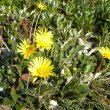
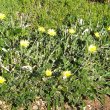
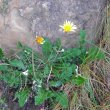
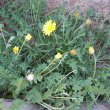
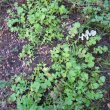



Discuss this plant
Share knowledge, ask a question or give an experience.